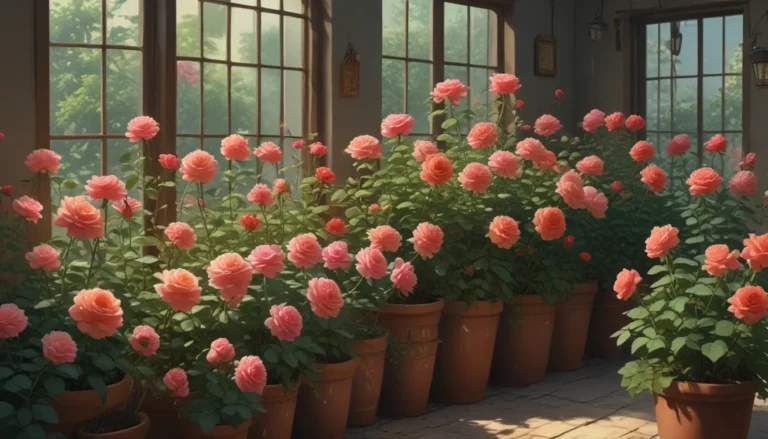The Ultimate Guide to Growing and Caring for Barrenwort: A Plant with Dainty Toughness

Are you searching for a delicate-looking plant that thrives in challenging conditions? Look no further than barrenwort, also known as fairy wings or bishop’s hat. These herbaceous woodland perennials are tougher than they appear, making them a fantastic addition to any garden. In this comprehensive guide, you’ll learn everything you need to know to grow and care for barrenwort successfully. So, let’s dive in and uncover the secrets to cultivating these beautiful plants.
What Is Barrenwort?
Barrenwort, scientifically known as Epimedium spp., belongs to the Berberidaceae or barberry family. This plant earned its common name from the myth that consuming its roots causes infertility in women. However, don’t let this superstition deter you from enjoying the beauty of barrenwort in your garden.
With over 60 recognized species, most native to eastern Asia and the Mediterranean region, barrenwort features lovely compound leaves with various shapes and colors. Their delicate flowers bloom in shades of yellow, pink, purple, red, or white, adding a touch of charm to any garden. Not only are barrenworts visually appealing, but they are also resistant to pests, diseases, and drought, making them a low-maintenance choice for gardeners.
Cultivation and History
Aside from their ornamental value, barrenworts have a rich history in herbal medicine. Historically used in China, Japan, and Korea, barrenwort was believed to treat impotence and other health conditions. Despite its reputation as a potential aphrodisiac, barrenwort boasts various medicinal properties, including anti-aging and anti-tumor effects.
After its introduction to the western world in the late 20th century, barrenworts gained popularity as a rugged plant for shady and dry areas. Today, gardeners appreciate barrenwort for its adaptability and resilience, making it a versatile addition to any garden.
Barrenwort Plant Propagation
Propagating barrenwort can be done through seed, division, or transplanting. While seed propagation requires specific conditions for germination, division and transplanting are easier methods to increase your barrenwort population. Whether you’re starting from scratch or expanding your garden, these propagation techniques will help you cultivate lush, vibrant barrenworts in your outdoor space.
How to Grow Barrenwort Flowers
Barrenworts thrive in partial shade and well-draining soil. With their slow growth rate and drought tolerance, these plants are ideal for busy gardeners looking for low-maintenance options. Watering regularly and amending the soil with compost will ensure your barrenworts grow healthy and strong. By following these simple growing tips, you can enjoy beautiful blooms and lush foliage year after year.
Best Uses
Beyond their medicinal and ornamental value, barrenworts are perfect for various garden applications. Their shallow root systems make them excellent ground cover plants, ideal for shade or woodland gardens. Additionally, barrenworts help control soil erosion, making them a practical choice for maintaining your garden’s health and beauty. Whether you’re planting a medicinal herb garden or creating a tranquil woodland retreat, barrenworts are versatile plants that add beauty and functionality to any outdoor space.
Managing Pests and Disease
While barrenworts are generally resistant to pests and diseases, they may occasionally face challenges such as slugs or vine weevils. By implementing preventive measures and natural control methods, you can protect your plants from common garden pests. With proper care and vigilance, you can keep your barrenworts healthy and thriving year-round.
Quick Reference Growing Guide
For easy reference, here’s a quick guide to growing barrenwort:
- Plant Type: Herbaceous perennial
- Flower/Foliage Color: White, yellow, pink, purple/green, red
- Native to: Asia, Mediterranean region
- Water Needs: Moderate
- Hardiness (USDA Zones): 5-9
- Maintenance: Low
- Bloom Time: Early spring to early summer
- Tolerance: Deer, dry soil, heavy shade, rabbits, rocky soil
- Exposure: Partial shade
- Soil Type: Fertile
- Time to Maturity: 3-4 years
- Soil pH: 5.0-7.0
- Spacing: 12 inches
- Soil Drainage: Well-draining
- Planting Depth: Just below surface (seeds), depth of root system (transplants)
- Attracts: Bees, other pollinating insects
- Height: 6-24 inches
- Uses: Ground cover, medicinal herb garden, shade garden, woodland garden
- Spread: 12-36 inches
By following these guidelines, you can grow and care for beautiful barrenworts in your garden, creating a serene and vibrant outdoor space for you to enjoy.
Conclusion
In conclusion, barrenwort is a resilient and versatile plant that adds beauty and charm to any garden. With its dainty appearance and tough nature, it’s the perfect choice for gardeners looking for low-maintenance plants that thrive in challenging conditions. By following the tips and techniques outlined in this guide, you can cultivate lush, vibrant barrenworts in your outdoor space, creating a tranquil and welcoming garden retreat. So, why wait? Start growing barrenworts today and experience the joy of nurturing these lovely plants in your garden.





